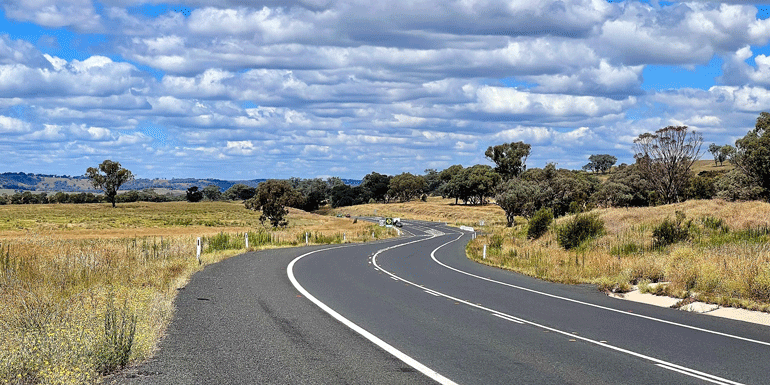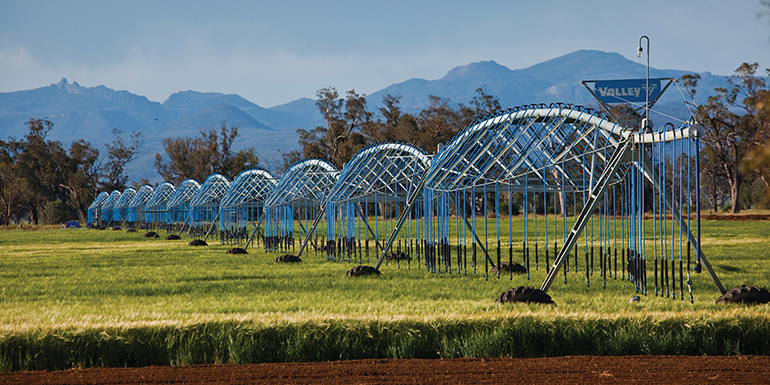Key points
- Local councils and authorities are being affected by climate change in different ways. These impacts are based on their climate and geography, as well as their community, environment and industry vulnerabilities, and available resources.
- Effective climate change adaptation planning follows a four-step process: assess climate change risks, identify options and plan, fund and implement actions, and monitor and review.
- The NSW Government offers a range of resources, tools and information to help councils and authorities prepare climate change adaptation plans.
- Through integrating climate change adaptation into local council and authority operations now, costly damages to property, infrastructure, farmland, livelihoods, and our health and wellbeing can be minimised into the future.
Why councils and authorities need to adapt
Climate change is having different effects across NSW, so every local council and authority needs to have an individual plan.
The NSW Government, local councils and authorities are working together to plan for the impacts of climate change. The NSW Government’s Net Zero Plan Stage 1: 2020–2030 is the foundation for NSW’s action on climate change and its goal to reach net zero emissions by 2050. The NSW Climate Change Policy Framework outlines the long-term objectives to achieve net-zero emissions by 2050 and to make NSW more resilient to a changing climate.
The adaptation planning process
To adapt to the impacts of climate change, local councils and authorities can follow this four-step process:
Step 1 - Assess the risks of climate change in your region. This involves assessing exposure and vulnerability.
Step 2 - Identify options and plan to manage or reduce the impacts of climate change on local people, environments, economy, assets, services and operations
Step 3 - Fund and implement plans in consultation with local communities and stakeholders
Step 4 - Monitor and review plans and results regularly for ongoing updates and improvements.

Step 1 - Assess the risks of climate change in your region
To plan effectively for climate change - local exposure, vulnerability and risks need to be understood.
Exposure refers to the places and things that may be exposed to a climate change impact. Exposure differs across regions – and within regions – based on different local climates, geography and demographics.
Tangible things that could be exposed to climate change impacts include people, buildings, infrastructure and natural environments. For example - people in urban areas are highly exposed to the impacts of extreme heat, because of the combination of increased temperatures and the urban heat island effect.
Intangible things include jobs, lifestyles, social and cultural factors, and the services that ecosystems provide. For example, agricultural jobs in inland NSW are exposed to drought.
Exposure can be assessed using existing data for a given area, such as census information or mapping and spatial data.
Vulnerability refers to how something might cope with climate change impacts. For example, buildings made with materials such as softwoods, weatherboard and carpets are more vulnerable to flood damage than buildings made from more resilient materials such as concrete, brick and tiles.
As the level of government closest to local communities - councils are well placed to make detailed risk assessments for a local area. Quality risk assessments help councils clearly understand which parts of their region are vulnerable to the impacts of climate change and make appropriate adaptations. The Guide to Integrated Regional Vulnerability Assessment for Climate Change provides steps to identify and assess climate change vulnerabilities.
Risk is the likelihood of a climate change impact and the level of possible impact.
Assessing climate change risk, and estimating impacts requires councils to understand both exposure and vulnerability.
- Exposure: Climate change is increasing average temperatures across NSW, so exposure to heatwaves in future will increase. Exposure differs across NSW based on different local climates, geography and the tangible and intangible things within an area.
- Vulnerability: People or assets exposed to the same heatwave may be impacted differently based on their level of vulnerability. For example, a community centre that does not have air-conditioning is more vulnerable to heatwave impacts compared to a centre with air-conditioning.
Places and people with high exposure and high vulnerability have the greatest risk of being impacted by climate change.
Councils and authorities can complete climate change risk assessments for their assets and operations by considering local factors such as: geography, climate projections, demographics, and the council capabilities and resources available.
A step-by-step process to climate change risk assessments is provided in the Guide to Climate Change Risk Assessment for NSW Local Government. The guide can be used to:
- undertake new climate change risk assessments using a standardised approach
- refine previous climate change risk assessments
- generate information that can be used to develop adaptation strategies and make decisions around risks and uncertainty.
Based on the risk assessment, councils can then set the scope for planning. For example, the focus may be on reducing risks to higher risk communities, council assets, or areas of social, cultural or environmental importance. The scope will determine which stakeholders need to be involved and the best approach for consultation.
Find out how some councils are using climate projections developed through the NSW and Australian Regional Climate Modelling (NARCliM) project to understand and better plan for future climate change.
Information, climate snapshots, vulnerability assessments and adaptation reports for NSW regions - AdaptNSW
Guide to Climate Change Risk Assessment for NSW Local Government - NSW Department of Planning, Industry and Environment
Guide to Integrated Regional Vulnerability Assessment for Climate Change - NSW Department of Planning, Industry and Environment
Guidance for strategic decisions on climate and disaster risk - Australia Disaster Resilience Knowledge Hub
Step 2 - Identify options and plan to manage or reduce the impacts of climate change
To manage current and future climate impacts, the NSW Government, councils and authorities may need to adapt their assets, services and operations. The outcomes of the assessment stage will inform the development of adaptation plans. Adaptation plans assess, select and prioritise the measures to be taken.
For local councils, adaptation planning on climate change can help to:
- address the vulnerabilities identified in their climate change risk assessments, embed adaptation measures into their Integrated Planning and Reporting framework, and existing operations and processes
- address climate risks while reducing the cost and extent of future impacts and damages
- integrate climate change risk into councils’ corporate risk registers and long term financial management
- build internal partnerships for adaptation responses across the different functional areas of councils
- identify community expectations about council services.
Engaging with the community is a critical part of adaptation planning. Councils are the level of government that has the greatest understanding of their local community. To build community understanding of adaptation planning, it is important to ensure the community understands the projected climate impacts in their local government area. Communities can then share their view on acceptable levels of risk. This process will increase community awareness and understanding of climate change adaptation and planning.
Council adaptation plans need to align with the NSW Government’s Integrated Planning and Reporting Framework, and include:
- a 10-year community strategic plan
- a resourcing strategy
- a delivery program
- annual operational plans
- ongoing monitoring, review and community engagement.
Integrated Planning and Reporting Guidelines for local government in NSW – NSW Government
Integrated Planning and Reporting Manual for local government in NSW – NSW Government
Coastal Management Framework – NSW Government
Floodplain management Program – NSW Government
Enhanced Bushfire Management Program – NSW Government
Bushfire Risk Management Plans – NSW Rural Fire Service
Drought in NSW – NSW Government
Minimising the impacts of extreme heat: A guide for local government – NSW Government
SEED portal datasets on urban heat and green-cover baseline assessments – NSW Government
Technical Guidelines for Urban Green Cover in NSW – NSW Government
Urban Heat Island Mitigation Decision Support Tool – University of NSW
Get Ready NSW Resource Hub - NSW Government
Step 3 - Fund and implement plans in consultation with local communities and stakeholders
To help councils implement adaptation plans, the NSW Government has partnered with Local Government NSW to provide grants programs. For example the following programs have helped councils address the climate change vulnerabilities and risks they have identified:
- The Building Resilience to Climate Change council grant program, which ended in 2016, helped local councils address identified climate change risks and vulnerabilities they were facing; 21 councils received a combined total of nearly $1.5 million.
- The Increasing Resilience to Climate Change council grant program has provided $2.8 million from the NSW Climate Change Fund directly to councils in NSW to take action to respond to the impacts of climate change.
Local Government NSW has developed a range of climate change case studies to help councils and authorities share best practice and learn from each other. This will help drive ongoing improvements across NSW.
Get Ready program for councils – Resilience NSW
Climate change case studies – Local Government NSW
NSW Climate Change Fund programs – NSW Government
Step 4 - Monitor and review plans and results regularly for ongoing updates and improvements
Councils should review their adaptation plans regularly to assess their effectiveness, and ensure they are up to date with the latest climate impacts and projections for their region.
The NSW Government reviews adaptation planning across NSW through the NSW Climate Change Adaptation Survey. The survey findings help understand and monitor local government responses to climate change.
Case studies

NSW councils are building climate risk into their business-as-usual planning and policies for the first time, thanks to products developed using NARCliM’s locally relevant climate modelled data.

Learn how NARCliM climate projections are being used by various NSW sectors to understand and adapt to climate change.

Monash University's Climate Change Communication Research Hub applied NARCliM regional climate projections to visualise the projected increase in average summer temperatures across Australia's local government areas.



